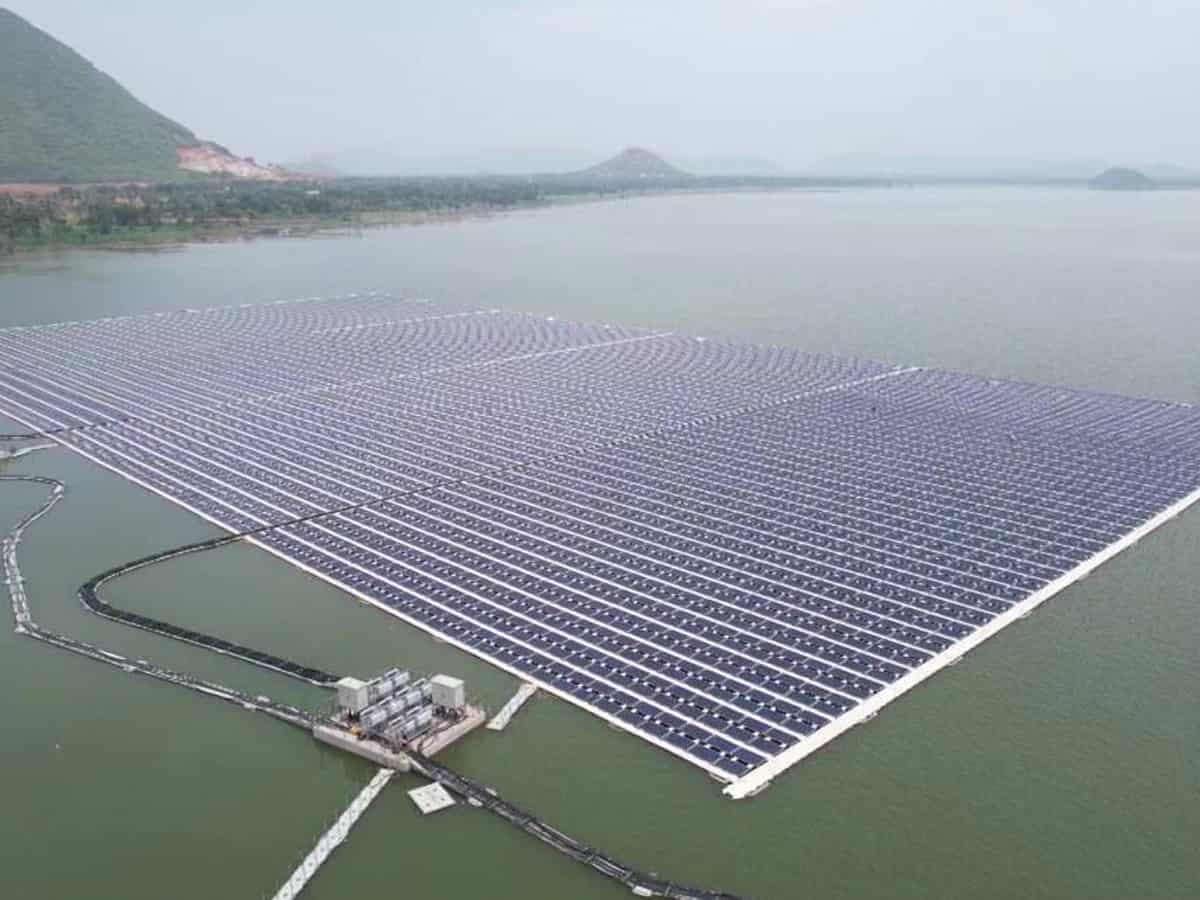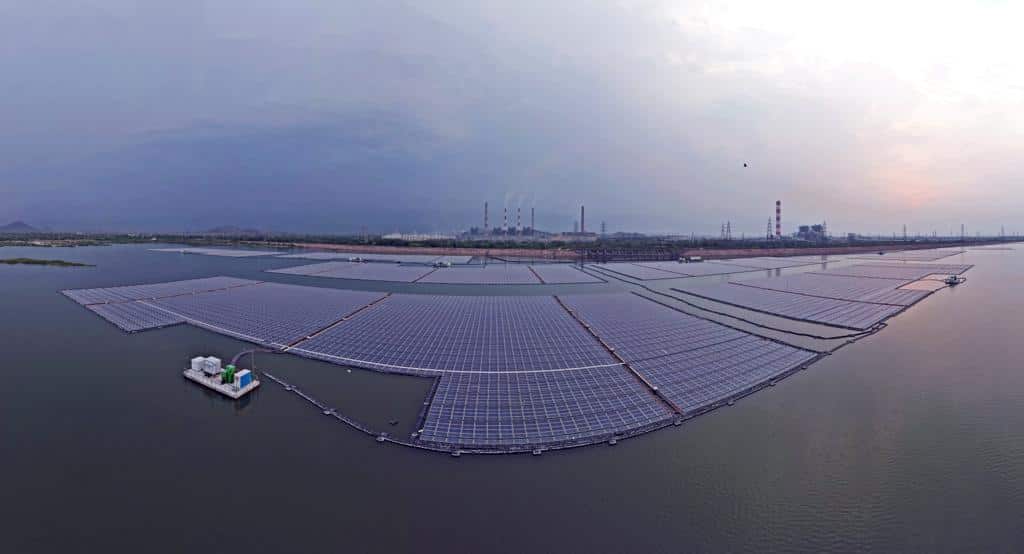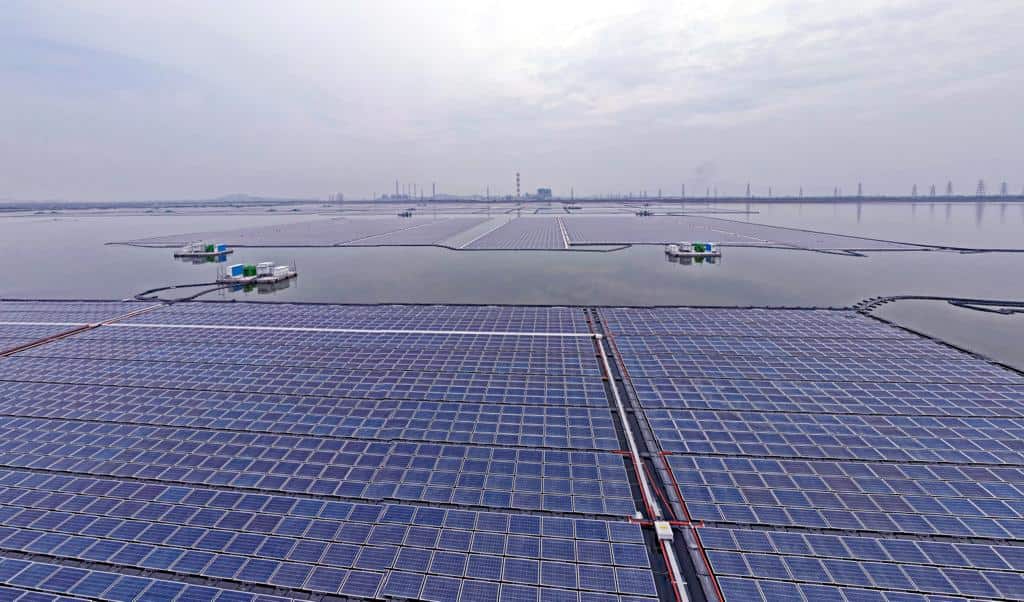
Ramagundam in Telangana State is known for its blistering summer heat. Locally, it is sometimes referred to as ‘Agnigundam (firewell) in Telugu language. For all those travelling to Delhi by train during summers (especially, non AC class) from Hyderabad, the few hours of journey through Ramagundam, Mancherial and Adilabad to Nagpur will always be remembered for braving the heat.
In 1978, the public sector, NTPC came up with its first thermal unit in the town to generate power and supply to the southern state. Very soon, it became synonymous with Ramagundam. Today, the NTPC has grown into 2640 MW capacity plant, one of its largest sites in the country.
In mid 2022, Ramagundam, now part of Peddapalli district added a new first with the commissioning of the country’s largest Floating Solar Power Plant as on date by the NTPC. It’s about 5 km from the town.
The 100 MW, Solar Photovoltaic (PV) unit executed by the BHEL is a 4-5 hour drive from Hyderabad and is quite scenic, spread over the waters of the balancing reservoir of the NTPC Power plant.
A unique feature of the project is that all the electrical equipment is floating on the reservoir. Engineers constructed ferro-cement floating platforms (15.5 m x8 m x 1.2 m) on which Inverter, Transformer & HT breaker is placed.
In just over six months into its operational phase, the project has raised the expectations of setting up similar plants and rapidly increasing the generation of clean, renewable and environmentally friendly power in the long term.
The making of the project

The NTPC awarded the Rs 423 crore contract to BHEL in June 2019 as an EPC package. The project is developed on 450 acres of the Balancing reservoir of NTPC Ramagundam Station•
The project consists of 4 units of 25 MW each with a total capacity of 100 MW AC and 145 MW DC. The Power evacuation of the project is at 33 kV level through NTPC Ramagundam switchyard.
About 4.5 lakh solar PV modules, all made in India were used in the plant. The anchoring of the project is done through bottom anchoring by using pre-cast concrete blocks of 9 Ton weights.
The plant is designed to generate 222.965 MU in the first year of its operation with a capacity utilisation factor of 24.45%.
Advantages of the project

The major advantages of this project are minimizing the water evaporation, no land usage and higher generation of power in comparison to ground based solar plants. Further, Coal consumption of 1,65,000 Tons / year can be reduced and 2,10,000 tons of Co2 emission per year can be avoided.
The ED of the Ramagundam Unit, Sunil Kumar said, the NTPC will soon have 300 MW of floating solar power in place in the country. Earlier, NTPC declared Commercial operation of the 92 MW Floating Solar at Kayamkulam (Kerala) and 25 MW Floating Solar at Simhadri (Andhra Pradesh). Another couple of units are under construction in different regions.
However, some experts argue that the floating solar plants could have an impact on the water ecosystem in the lakes, reservoirs or other water bodies on which these plants are located, if adequate precautions are not taken in terms of contamination of water and consequent impact on marine life, if any.
NTPC renewables plans
The thrust on renewable energy in the context of India’s global commitments to reducing fossil fuel also put the responsibility on the NTPC to diversify. It has firmed up plans to have 60GW capacity through renewable energy sources by 2032, constituting nearly 45% of its overall power portfolio.
NTPC Renewables, it’s new identity created a few years ago has a commissioned capacity of more than 1500 MW of solar power projects under own capacity. These include some sizeable solar power projects in Bilhaur, Ananthapuram, Bhadla, Mandsaur etc.
According to reports, the company has firmed up plans to set up an ambitious 755 MW floating solar park to be developed at DVC’s Tilaiya and Panchet reservoirs in Jharkhand in north-eastern India.
NTPC Renewables, on behalf of Green Valley Renewable Energy, its joint venture (JV) with Damodar Valley Corporation (DVC), has opened a tender for 220 kV transmission assets to evacuate the power generation of the project.
The other major project in the pipeline of the power utility is the Khavda Solar Project in Gujarat State, one of the largest individual solar power plants in the world (1,568 MWp).The project implementer is Sterling and Wilson (S&W). It is supported by Nextracker Inc. which is providing the bifacial optimized NX Horizon solar tracker technology with heavily domestic manufactured content, aligned with the Government of India’s “Make-in-India” initiative.
S&W and Nextracker have implemented several projects in India, Australia, Latin America, Africa, and the Middle East regions over the years, according to reports.



